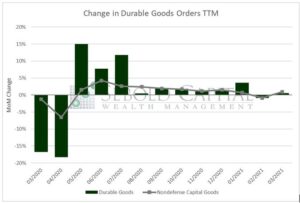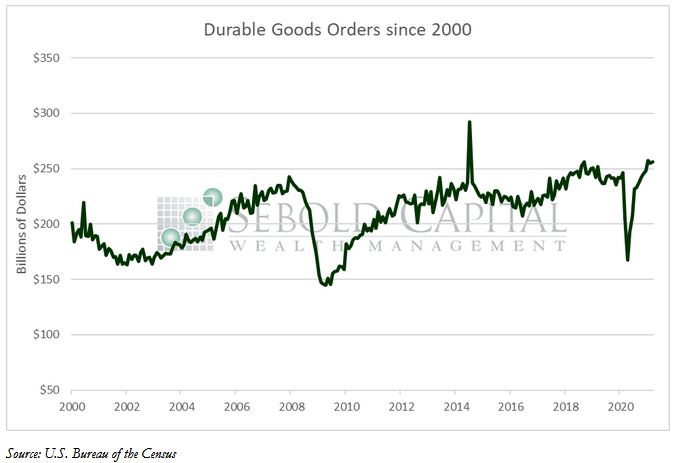 Durable goods orders, which are orders to buy products that are expected to last at least three years, indicate how busy factories will be in the near future. As the name suggests, durable orders provide a look into demand for equipment along with other big-ticket purchases, such as vehicles and appliances. An increase in capital spending and consumer purchases indicates an increase in business investment and personal consumption in GDP.
Durable goods orders, which are orders to buy products that are expected to last at least three years, indicate how busy factories will be in the near future. As the name suggests, durable orders provide a look into demand for equipment along with other big-ticket purchases, such as vehicles and appliances. An increase in capital spending and consumer purchases indicates an increase in business investment and personal consumption in GDP.
In March, orders for durable goods rose by 0.5% to $256.3 billion, according to the advance estimate provided by the U.S. Bureau of the Census. Likewise, orders for nondefense capital goods—which are considered to be an indicator of future business spending plans—increased by 0.9% to $73.2 billion. Capital goods orders have grown by 25% since March of last year and have surpassed their pre-pandemic levels despite the economic setbacks.
Orders for long-lasting manufactured goods saw a slight increase last month after briefly declining in February. The figure would have likely been higher, but it was dampened by weak orders for commercial and military aircrafts. Orders for core capital goods—which include construction machinery, generators, farming equipment, computers, and medical equipment, but exclude orders for aircraft—rose in March, a sign that businesses may be anticipating stronger consumer demand in the coming months. However, shortages of key supplies, such as the notorious computer chip shortage, still pose difficulties for manufacturers and could cause supply chain disruptions.

April 26, 2021
